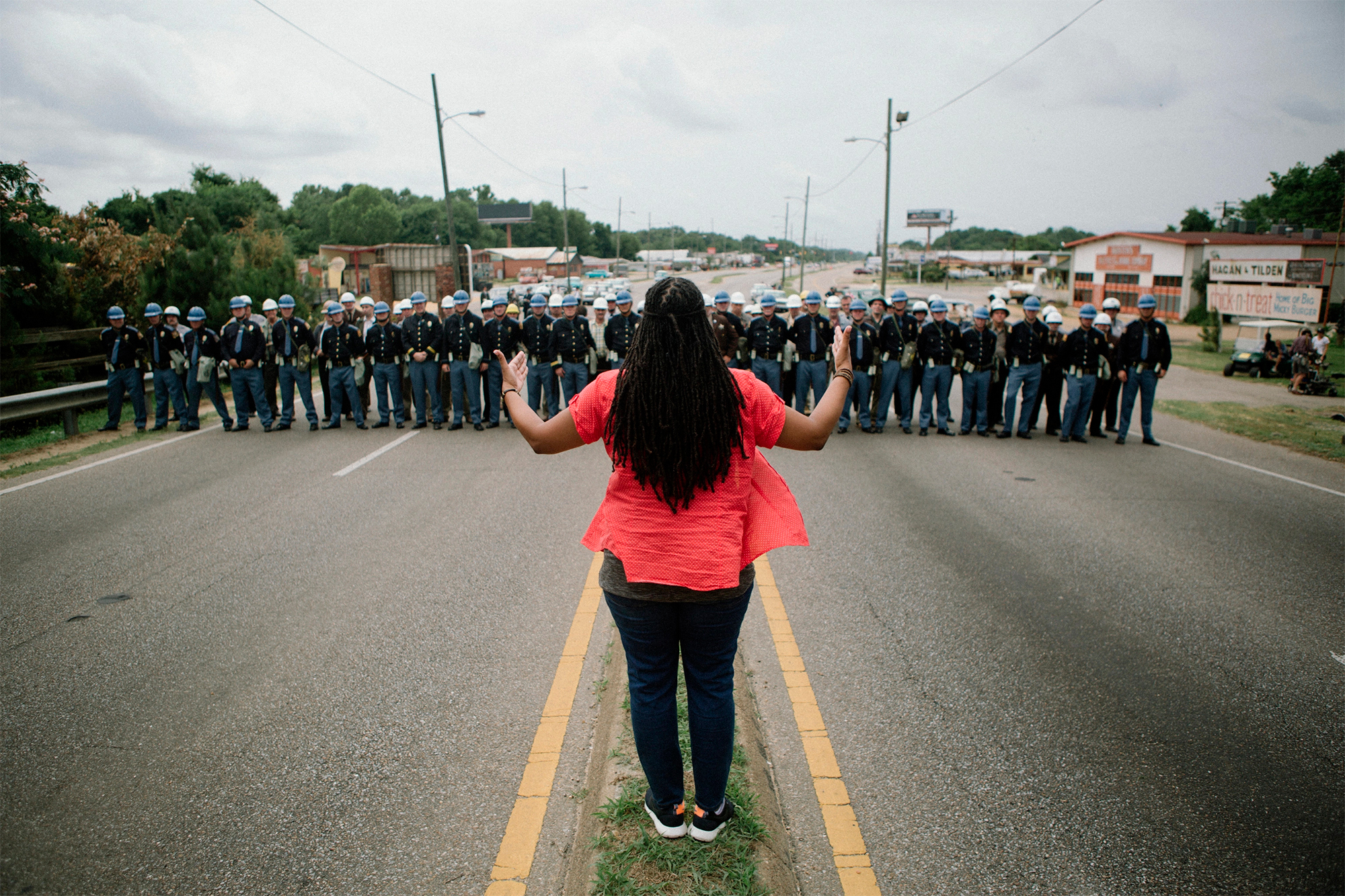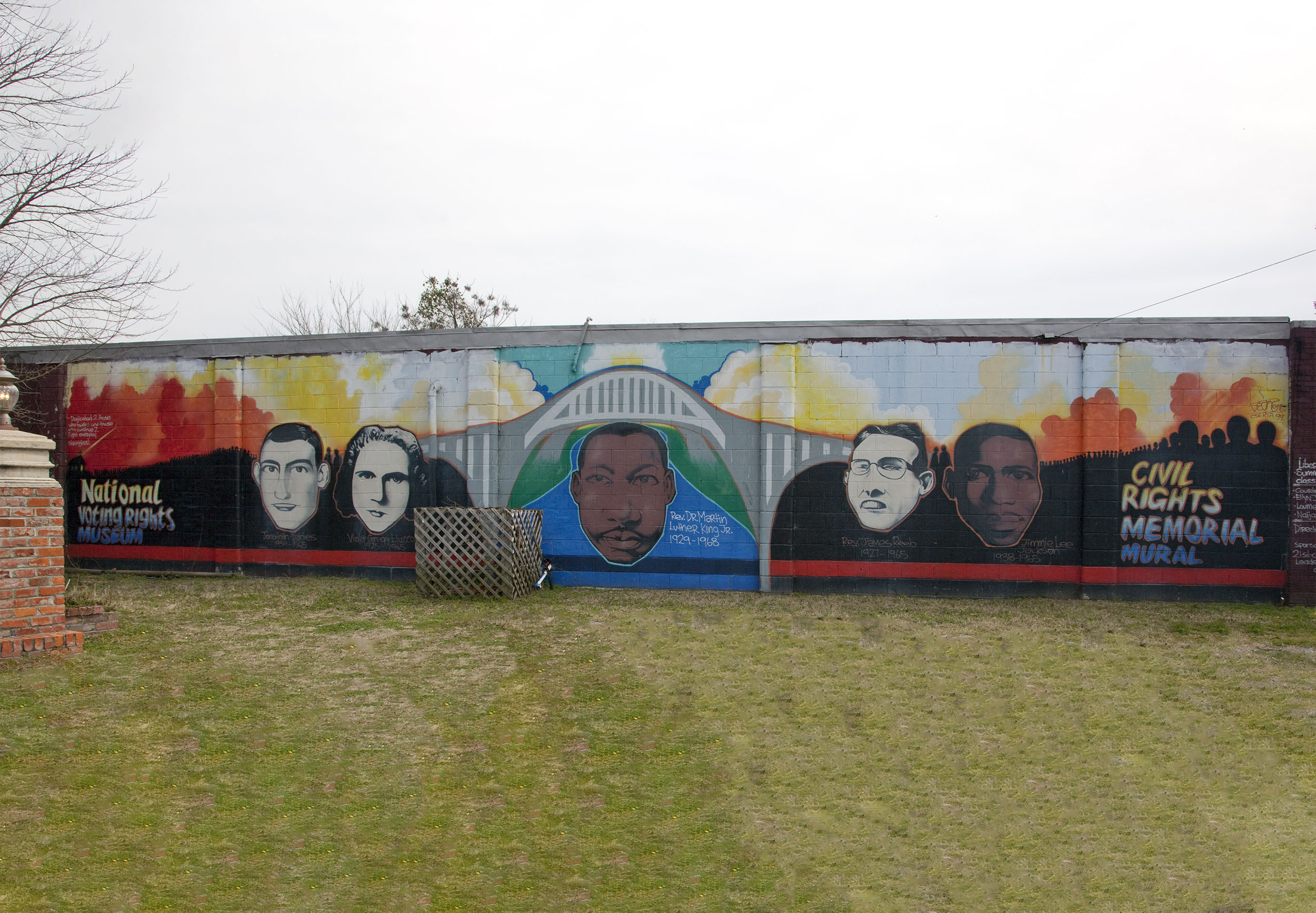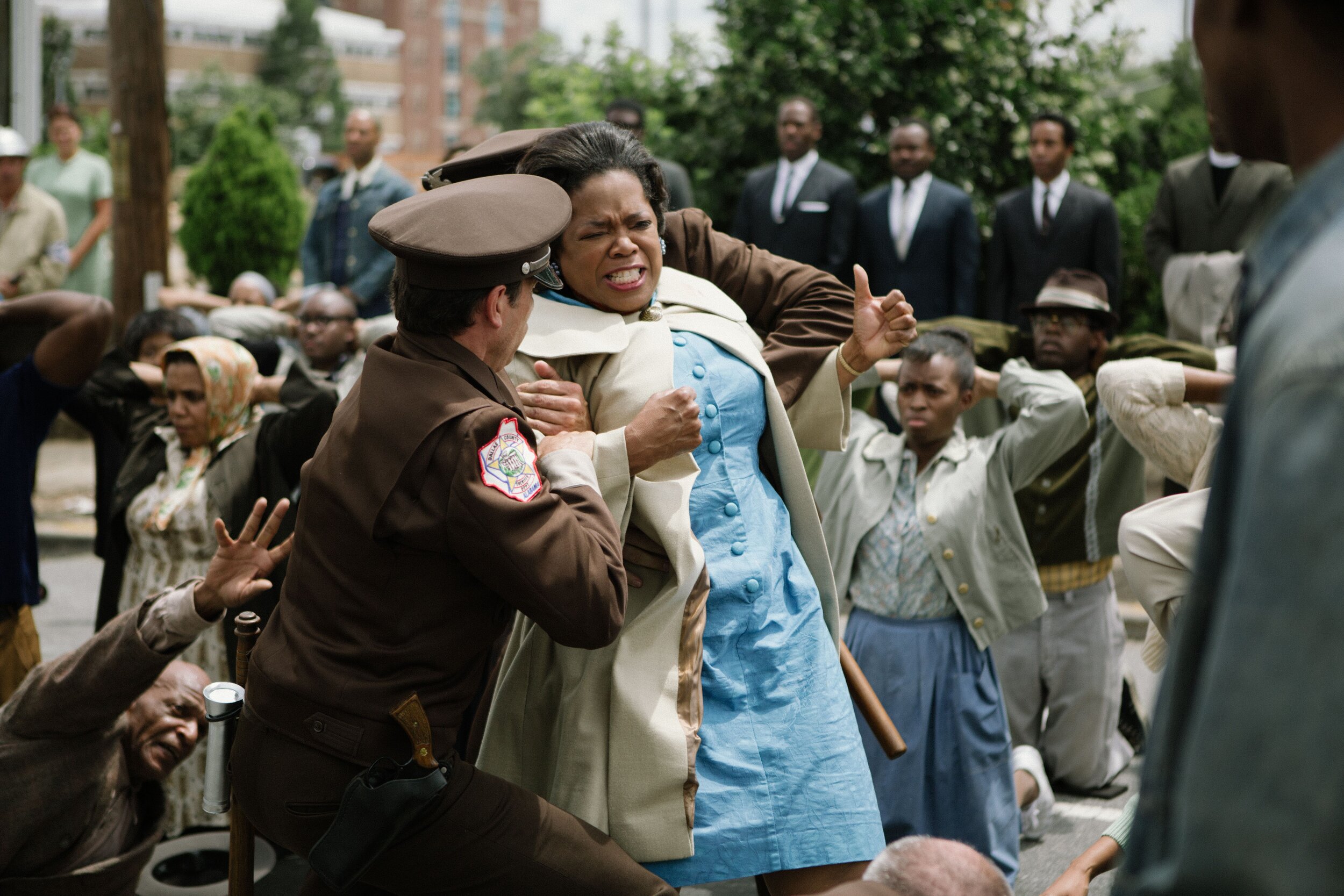
SELMA: A Learning Companion

One century after the last slave ship landed on America’s Alabama shores, the promised endowment of equality remained out of grasp for the state’s one million Black residents. By the mid-1960s, a path towards dismantling systems built to oppress and control the country’s most vulnerable citizens was heavy on the minds of Southern leaders like Ralph Abernathy, A. Philip Randolph, Bayard Rustin, Rev. C.T. Vivian, Hosea Williams, Andrew Young and Dr. Martin Luther King, Jr.
For a decade prior, these leaders made it their mission to abolish suppressive voting rules and other laws steeped in racism, which had created physical and emotional trauma in their communities. They found their moment of transformative change on March 7, 1965, when 600 courageous demonstrators stared down generations of oppression and marched 54 miles from Selma, Alabama, to the state’s capital of Montgomery, demanding equal rights and a voice to vote for America’s Black citizens.
SELMA tells the story of these determined leaders and their allies who staged three protest marches in Alabama, leading to Congress’s passage of the Voting Rights Act of 1965 (VRA). This act outlawed discriminatory voting laws, policies and practices, observed mostly in Southern states, instituted after Reconstruction. During Reconstruction, newly freed slaves started to participate in the political structure and began to vote for the first time, electing some 2,000 Black Americans to office, including one senator and seven representatives. The rise of Black representation in the economic, political and social structure led to the implementation of Black Codes, Jim Crow laws, discriminatory voting laws, policies and practices and gave rise to groups such as the Ku Klux Klan who terrorized and harassed Black voters.
Released in 2014, the Oscar-nominated feature film SELMA, directed by Ava DuVernay, follows the courageous journey of Dr. Martin Luther King, Jr., a young John Lewis, and other Civil Rights leaders as they demand voting rights. SELMA shines a light on institutionalized voter suppression and tactics used by state, local and federal government officials, the FBI, law enforcement, community members, and homegrown terrorist organizations to block Black citizens’ access to voting, along with other constitutional liberties that everyone should be granted.
Spanning from 1955 through 1965, the film is the first major scripted theatrical release centering Dr. Martin Luther King, Jr. as a main character outside of movies/mini-series made for television.
The signing of the VRA by President Lyndon B. Johnson on August 6, 1965 secured the right to vote for racial minorities throughout the country, especially in the South. The VRA was designed to enforce the 14th and 15th Amendments’ voting rights to the United States Constitution. Congress later amended the act five times to expand its protections, ending generations of voting rights atrocities—including unlawful voting tests and bribery meant to eliminate the Black vote. These suppression tactics were powerfully illustrated in SELMA with Oprah Winfrey’s character Annie Lee Cooper, a 54-year-old woman who tried to register to vote and was denied multiple times.
Today, decades after what seemed to be definitive legislation, voter suppression efforts continue to be a barrier for those seeking to fairly elect their representatives. From unfair registration rules and voter roll purges to gerrymandering and voter bans, systemic efforts have been in place for many years to find new loopholes around the guarantee of the 1965 Act, which states, “No voting qualification or prerequisite to voting, or standard, practice, or procedure shall be imposed or applied by any State or political subdivision to deny or abridge the right of any citizen of the United States to vote on account of race or color.”
The lessons taught by SELMA are needed today as much as they were in 1965.
Learning Companion Themes
The feature film SELMA follows the journey of the signing of the Voting Rights Act of 1965 from the perspective of Dr. Martin Luther King, Jr.
This learning companion will highlight three key themes amplified in the film and explore current day applications that can be used by learners of all ages.
This learning companion has been developed to deepen the conversation and inspire personal action after viewing SELMA.
Each section of the guide contains:
- Themes
- Objectives and Key Points
- Essential Questions
- Classroom Activities
- Resources for Self-Reflection and Deeper Learning
Our ability to participate in government, to elect our leaders and to improve our lives is contingent upon our ability to access the ballot. We know in our heart of hearts that voting is a sacred right – the fountain from which all other rights flow.”
Our ability to participate in government, to elect our leaders and to improve our lives is contingent upon our ability to access the ballot. We know in our heart of hearts that voting is a sacred right – the fountain from which all other rights flow.”
Using this companion
The feature film SELMA follows the journey of the signing of the Voting Rights Act of 1965 from the perspective of Dr. Martin Luther King, Jr.
This learning companion will highlight three key themes amplified in the film and explore current day applications that can be used by learners of all ages.
This learning companion has been developed to deepen the conversation and inspire personal action after viewing SELMA.
Each section of the guide contains:
- Themes
- Objectives and Key Points
- Essential Questions
- Classroom Activities
- Resources for Self-Reflection and Deeper Learning
Curriculum Overview
I Voted
EQUALITY VS. EQUITY is the theme of our first lesson, I Voted. In this lesson we move beyond the popular “I Voted” sticker on the shirt and examine the difference between fairness and equality as it relates to voting rights in the United States.
The Art of Persuasion
RESISTANCE AND PERSUASION is the theme for our second lesson, The Art of Persuasion. This lesson begins with a deep dive into the modes of persuasion and ends with activities that center on protest art as the representation of movements.
Anatomy of a Protest
PROTEST AND POWER is the theme of our third lesson, Anatomy of a Protest, in which learners develop a protest playbook. Learners will gain insights into the historical origins of protest as a tool for change, the purpose of a protest, the logistical considerations of organizing and executing a protest and how to measure the outcomes/success of a protest.
ARRAY 101 and SELMA Online
In March 2020, the Hutchins Center for African and African American Research at Harvard University unveiled a dynamic, free learning platform entitled SELMA Online. This engaging site uses footage and images from the feature film SELMA and interactive graphics to teach civil rights lessons centered on voting rights.
ARRAY 101 is proud to partner with Dr. Henry Louis Gates—Harvard scholar, filmmaker and leader of the Hutchins Center—to amplify SELMA Online throughout this Learning Companion. At the end of each ARRAY 101 lesson, users will find connections to the SELMA Online website where they can continue their learning journey.

ARRAY 101 welcomes to the SELMA Learning Companion academic powerhouse The Ron Clark Academy (RCA). The Academy, based in Atlanta, GA, has received both national and international recognition for creating a loving, dynamic learning environment that promotes academic excellence and fosters leadership. The teaching staff of RCA have provided professional development for more than 80,000 educators over the past 13 years, and their innovative teaching methods can now be found throughout this website. Don’t miss their lessons on gerrymandering and redlining in our ARRAY Field Study Lesson.

ARRAY 101 and SELMA Online
In March 2020, the Hutchins Center for African and African American Research at Harvard University unveiled a dynamic, free learning platform entitled SELMA Online. This engaging site uses footage and images from the feature film SELMA and interactive graphics to teach civil rights lessons centered on voting rights.
ARRAY 101 is proud to partner with Dr. Henry Louis Gates—Harvard scholar, filmmaker and leader of the Hutchins Center—to amplify SELMA Online throughout this Learning Companion. At the end of each ARRAY 101 lesson, users will find connections to the SELMA Online website where they can continue their learning journey.

ARRAY 101 welcomes to the SELMA Learning Companion academic powerhouse The Ron Clark Academy (RCA). The Academy, based in Atlanta, GA, has received both national and international recognition for creating a loving, dynamic learning environment that promotes academic excellence and fosters leadership. The teaching staff of RCA have provided professional development for more than 80,000 educators over the past 13 years, and their innovative teaching methods can now be found throughout this website. Don’t miss their lessons on gerrymandering and redlining in our ARRAY Field Study Lesson.
‘Edmund Pettus Bridge Mural by Naijal ‘Dayz’ Hawkins and the Liberation Summer Project’


